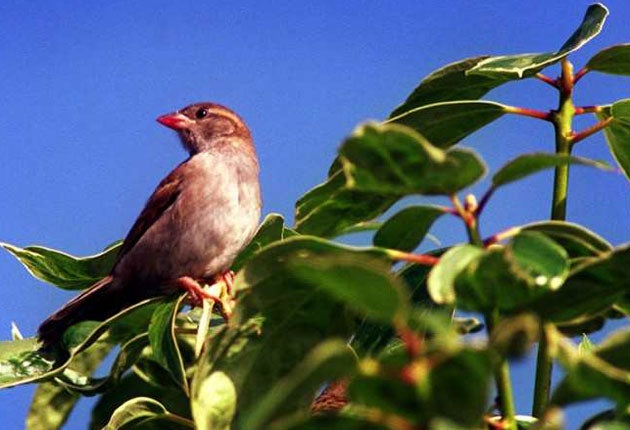Parks plan to boost London's house sparrows

Conservationists have launched a scheme to turn parts of London's parks into meadows in an attempt to reverse the decline of the once-common house sparrow.
The sparrow population in the capital has plummeted by 68 per cent in the past 15 years, mirroring severe declines in numbers of the bird across the UK's cities.
Research has indicated that changes to urban areas including increases in traffic, paving over gardens, removing trees and developing green spaces have led to a lack of seeds and insects which has left sparrows struggling to survive.
Many chicks are dying in the nest of dehydration or starvation because there are not enough moisture-rich insects for them to eat.
In London, the sparrow is at risk of disappearing altogether, the RSPB warned.
But the conservation charity has teamed up with a number of partners across Greater London to run a three-year project to try and provide food-rich habitats for the birds.
The £170,000 scheme is being funded by the SITA Trust which manages funding raised through taxes on rubbish sent to landfill.
Tim Webb, spokesman for the RSPB, said the plan was to sow areas of more than 20 parks in the capital with wild grasses and flowers to provide seeds and attract insects.
Each site will be managed using three different planting schemes of grass seed, wildflower meadow and wildlife seed mix.
While the main aim of the scheme is to boost sparrow numbers, the project could also encourage butterflies and moths back to the capital and provide food for other birds and bats, he said.
He said he was concerned that some people might think the wild areas, which will be in green spaces including Green Park and Kensington Gardens, were not being managed properly.
But he said the patches of long grass were part of a scientific project which would benefit the environment in those areas.
And he said: "In Greater London sparrow numbers are down 68 per cent on what they were in 1994, and there are some parts of central London where you don't see them at all anymore.
"There has been a dramatic decline and the concern is that the population will reach a level where it is no longer sustainable and they will disappear completely."
The three-year scheme will run on sites owned by project partners Lee Valley Regional Park Authority, City of London, the Royal Parks Agency, Wandsworth Borough Council, Islington Council and Southwark Council.
The 20 confirmed parks and the organisations which are taking part in the scheme are:
Hampstead Heath (City of London)
Laycock Street (Islington)
Whittington Park (Islington)
Paradise Park (Islington)
Highbury Fields (Islington)
Burgess Park (Southwark)
Peckham Rye Park (Southwark)
Tooting Common (Wandsworth)
Tottenham Marshes (Lee Valley)
Waterworks (Lee Valley)
Leyton Marshes (Lee Valley)
Green Park (The Royal Parks)
Kensington Gardens (The Royal Parks)
Hyde Park (The Royal Parks)
Primrose Hill (The Royal Parks)
Perretts Field (Sutton)
Bedding Park (Sutton)
St Helier Open Space (Sutton)
Rose Hill Park East (Sutton)
Cheam Park (Sutton)
Join our commenting forum
Join thought-provoking conversations, follow other Independent readers and see their replies
Comments
Bookmark popover
Removed from bookmarks